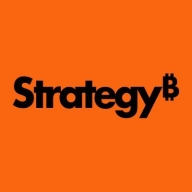

MicroStrategy and Oracle Analytics Cloud are both prominent in the business intelligence and analytics software category. MicroStrategy often holds an upper edge due to its comprehensive BI suite and superior scalability in enterprise environments.
Features: MicroStrategy is recognized for its advanced SQL Engine, reusable metadata, and mobile integration capabilities. It also excels in data exploration and offers a robust architecture that supports various analysis styles. Oracle Analytics Cloud is valued for its ease in creating visualizations and blending data from multiple sources, catering well to enterprises requiring diverse data type integration.
Room for Improvement: MicroStrategy faces challenges with a steep learning curve, high licensing costs, and complex customization and visualization. Users seek more user-friendly interfaces and smoother integration with emerging technologies. Oracle Analytics Cloud is critiqued for limited charting options, expensive scaling, and sometimes complex user interactions. More visualization options and ease of use are needed for both products.
Ease of Deployment and Customer Service: MicroStrategy focuses on flexible deployment, emphasizing on-premises setups that allow thorough customization. Customer service feedback is mixed, with reliance on its extensive knowledge base. Oracle Analytics Cloud offers versatile deployment across public, hybrid, and private clouds, receiving generally positive customer service ratings, although pricing discussions can be challenging.
Pricing and ROI: MicroStrategy's pricing is considered high, which may deter small to medium enterprises, but its extensive features and long-term cost-effectiveness are appreciated. ROI is perceived through efficient reporting and enterprise usability. Oracle Analytics Cloud, while still costly, is often cheaper than competitors like Tableau and Power BI, with flexible scaling options beneficial for larger deployments but requiring careful rate negotiations.
| Product | Market Share (%) |
|---|---|
| Oracle Analytics Cloud | 2.0% |
| MicroStrategy | 2.0% |
| Other | 96.0% |


| Company Size | Count |
|---|---|
| Small Business | 37 |
| Midsize Enterprise | 26 |
| Large Enterprise | 99 |
| Company Size | Count |
|---|---|
| Small Business | 12 |
| Midsize Enterprise | 7 |
| Large Enterprise | 11 |
Company: Founded in 1989, MicroStrategy (Nasdaq: MSTR) is a leading worldwide provider of enterprise software platforms. With direct operations in 26 countries worldwide and approximately 2,000 employees, our mission is to provide enterprise analytics, mobility, and security platforms that are flexible, powerful, scalable and user-friendly. To learn more, visit MicroStrategy online, and follow us on Facebook and Twitter.
Product portfoilio:
MicroStrategy 10 Secure Enterprise™ empowers leading organizations to analyze vast amounts of data and distribute actionable business insight throughout an enterprise through two distinct offerings: MicroStrategy Analytics™ and MicroStrategy Desktop™. MicroStrategy Analytics delivers reports and dashboards, and enables users to conduct ad hoc analysis and share insights anywhere, anytime, via mobile devices or the Web. It also combines the agility and productivity of self-service visual data discovery with the security, scalability, and governance features of enterprise-grade business intelligence. MicroStrategy Desktop is a standalone, on-premise visual data discovery tool designed to enable business users to analyze and understand their data. MicroStrategy Mobile™ enables organizations to rapidly build custom business applications that deliver analytics combined with transactions, multimedia, and custom workflows to mobile devices. MicroStrategy Secure Cloud™ combines all of the enterprise analytics, mobile, and security features in MicroStrategy 10 Secure Enterprise with powerful and scalable data integration, validation, and warehousing services — all delivered in an environment where organizations can deploy transformational analytics applications in minutes.
Usher, MicroStrategy’s breakthrough security solution, is a powerful mobile security platform designed to dematerialize traditional forms of identity verification (such as passwords, tokens, and physical badges) and replace them with a single mobile identity badge that is cryptographically linked to its owner’s smartphone and dynamically linked to an enterprise’s existing identity repositories. Usher works on standard Android and iOS smartphones, and also boasts an Apple Watch™ integration.
Oracle Analytics is a complete platform with ready-to-use services for a wide variety of workloads and data.
Oracle Analytics allows businesses to add AI and machine learning capabilities to any application—and as part of our integrated suite of cloud services to comply with data security and connected without disrupting business operations.
Offering valuable, actionable insights from all types of data—in the cloud, on-premises, or in a hybrid deployment—Oracle Analytics empowers business users, data engineers, and data scientists to access and process relevant data, evaluate predictions, and make quick, accurate decisions.
Oracle Analytics Cloud Features
Oracle Analytics Cloud has many valuable key features. Some of the most useful ones include:
Oracle Analytics Cloud Benefits
There are many benefits to implementing Oracle Analytics Cloud. Some of the biggest advantages the solution offers include:
Reviews from Real Users
Below are some reviews and helpful feedback written by PeerSpot users currently using the Oracle Analytics Cloud solution.
Fabricio Q., Data Analytics Manager, says, “The main functionality is great and everything is pretty standard and easy to use. It's great for consolidation and creating one source of truth. The initial setup is pretty straightforward.”
PeerSpot user, Eric B., Independent Consultant - Oracle BI Applications at Desjardins, mentions “It's really an enterprise solution. It has standard dashboarding functionality. It also has reporting capabilities for producing pixel-perfect reports, bursting large volumes of a document if you need to. It has interactive data discovery functionality, which you would use to explore your data, bring your own data, and merge it with maybe the data from an enterprise data warehouse to get new insights from the pre-existing data. It has machine learning embedded in the solution.”
Gaurav S., Vice President Credit Risk Management at a financial services firm, explains, “From a financial or bank perspective, this product is secure enough. The dashboards, analytics, visualizations, and different reports are valuable for business analytics. The AI/ML enablement is useful, as many reporting tools do not offer machine learning models as of now, without writing customized code.”
Another reviewer, Trinh P., Delivery Manager at Sift Ag, comments, "The specific capability I find important in Oracle Analytics Cloud is that it allows the basic user to easily drag and drop data. I also like that the solution allows the user to decide what to measure and what to see in the reports."
We monitor all BI (Business Intelligence) Tools reviews to prevent fraudulent reviews and keep review quality high. We do not post reviews by company employees or direct competitors. We validate each review for authenticity via cross-reference with LinkedIn, and personal follow-up with the reviewer when necessary.